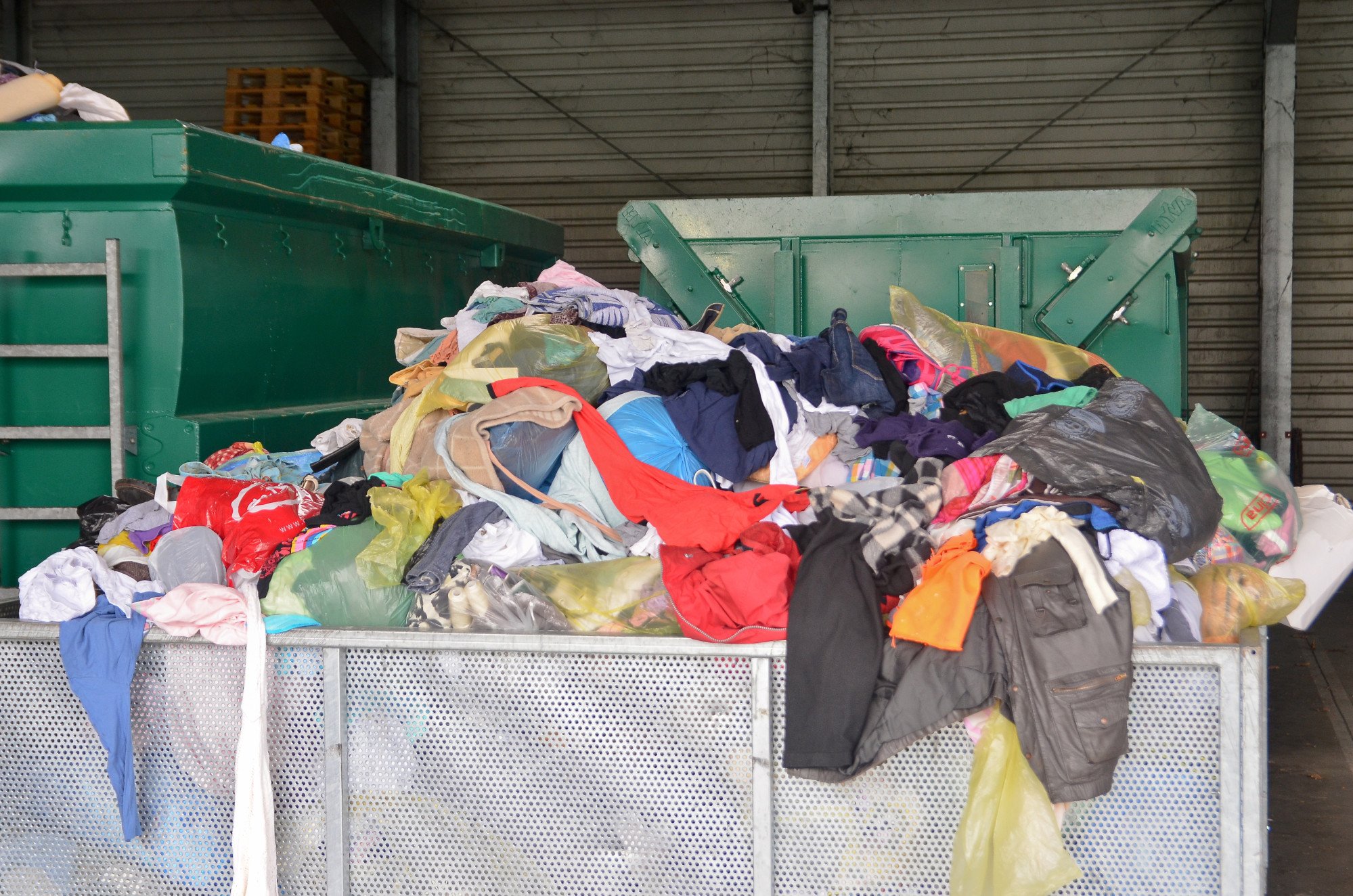
Poverty, pollution and profligacy – a fast-fashion horror story that will make you think twice about buying clothes
- Author Maxine Bédat traces the life cycle of an average pair of jeans ‘from farm to landfill’ and what she discovers makes for shocking reading
- Pollution spewing from Chinese denim factories, women in poor countries sewing like machines, your conscience-easing thrift shop donations – all is dissected
Unraveled: The Life and Death of a Garment by Maxine Bédat, pub. Portfolio
Whenever Japan’s domestic goddess Marie Kondo preaches her gospel – of discarding belongings that no longer spark joy – she prompts wholesale purging as rapturous as the reaction to her immaculate tidying concept.
In the wake of Kondo’s 2019 Netflix series, for example, Americans formed long queues outside thrift shops to relieve themselves of clothing. And 18 months of pandemic-related lockdowns have only expedited showdowns with bulging wardrobes, according to Maxine Bédat, author of Unraveled: The Life and Death of a Garment.
Purging may prove cathartic for those who believe their actions have a higher purpose, but the reality is often different, she says. Bags of clothes dumped outside donation centres most likely end up in landfills. She adds: “Eighty per cent of donations leave a donation store’s floor not in the arms of individuals […] but packed into huge bales headed many places, including overseas.”
Bédat may be referring to the United States, but her point is clear: our taste for fast fashion is unsustainable. Her book, which follows the journey of an imaginary pair of jeans, from fibre to smoke fumes, ends where mountains of donated clothing wind up – Ghana, the final resting place for second-hand apparel sent also from Europe and Asia to be sold at markets in Accra. What isn’t sold makes its way to places such as the Kpone landfill, where Bédat witnesses bags full of gear – “Puma high-tops, H&M shifts, knock-off Versace bags” – go up in flames.
If the thought doesn’t wrinkle your nose, the figures she cites might: 1.25 billion pairs of jeans are sold every year, and women in America own, on average, seven pairs each. Americans also discard more than 36kg of textiles per person, per annum. Much would have come from China, which in 2015 exported US$284 billion worth of textiles and clothing, accounting for 43 per cent of the global market.
Should we stop making clothes to save the world from fast fashion?
From her home in New York, Bédat explains that the early stages of the textile production cycle exact the highest environmental toll and account for 75 per cent of the clothing industry’s growing carbon footprint. On the issue of climate change, she points out that fossil fuels generate 85.7 per cent of China’s energy, adding, “Production in China is cheap in part because they use cheap energy.”
This explains why some of the most interesting chapters of Unraveled are those that recount her experiences in China. There, she shows how raw fibre is spun into yarn, dyed and woven into denim.
In Shaoxing, she is a guest at the “five-star” facilities of the Zhejiang Qing Mao Weaving, Dyeing and Printing Co, where waste water is treated before being discharged and she doesn’t fear being poisoned inadvertently. But then she blags her way into a denim wash house, in Guangdong, that is all “sloshing chemical run-off”, its workers inadequately protected against what she believes is potassium permanganate, a corrosive denim-fading agent. Coming out of the factory, “a bluish-black substance” glistening like an oil spill spews into a river nearby. Its waters irrigate contiguous farms.
Bédat also travels to emerging markets where cut-and-sew costs are lower than in China. In Bangladesh and Sri Lanka, she meets women who work like machines, spitting out garments. Some, she says, are so poorly paid they are forced into the sex trade to make ends meet. Rounding out her investigation are domestic visits, to cotton farms in Texas, which prompt discussion of organic cotton (which only means it was grown without the prohibited pesticides and synthetic fertilisers), and to an Amazon warehouse, from where apparel is dispatched to be stuffed into cupboards around the world.

At each step, Bédat, a lawyer by training, reminds us how much is involved in the processing of garments and how little information consumers are given: clothing labels provide inadequate information about their countries of origin and their environmental impact. What’s missing from jeans tags that may say “Made in China” is the provenance of the zip or the fabric itself, she points out. Also missing: “chemical fertilisers and pesticides, the carbon emissions and more chemicals used to make and finish the fabric”. Worse is that fashion companies themselves rarely know the full life stories of their products.
Unraveled will pummel your conscience and its message will ring in your ears long after you’ve closed the book. But the journey of the jeans alone would have been as effective an anti-consumerist polemic as pushing placards into readers’ faces, which can be tiresome. Indeed, her broadsides at neoliberalism’s “extreme” capitalism seem better suited to a separate book. Certain statements will also rub the wrong way: in arguing about the layers of opaqueness in the industry’s complex supply chains, she uses as an example Hong Kong-based behemoth Li & Fung, writing carelessly about the middleman: “I bet you never heard of them.”
All that said, Unraveled has done its work. Seams have been unpicked and the clothing industry exposed in ways that should make us think twice about high-street throwaways. It is also chilling to know that young consumers are pressured into believing being photographed more than a couple of times in the same outfit constitutes a fashion faux pas.

Citing a report by Britain-based charity the Ellen MacArthur Foundation, Bédat adds that if we do nothing, by 2050 “clothes will consume more than a quarter of the world’s entire carbon budget”.
Marie Kondo would surely agree there is no joy in that.
Maxine Bédat, author of Unraveled: The Life and Death of a Garment, appears this week on The Post Books Podcast, a South China Morning Post production on SoundCloud hosted by Charmaine Chan.
Further reading on the subject
Among the books Bédat read around her subject was Lost Connections: Why You’re Depressed and How to Find Hope (2018), by Johann Hari. The author addresses assumptions that depression and anxiety are caused by a chemical imbalance in the brain, and can be treated accordingly. His study of societal problems accompanying their incidence, says Bédat, helped her to understand the pressures experienced by garment and distribution workers, among others. She notes the enormous “mental toll it takes to operate as a machine, only to be eventually replaced by one”.
Bédat also applauds the books of Dani Rodrik, a critic of economic globalisation, for explaining worldwide trade and the need to move to a regime in which countries do not compete against each other “to have the lowest standards”.
Higher industry standards should be included in trade agreements, Bédat believes “so we can have, instead of a race to the bottom, a race to the top”.

